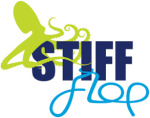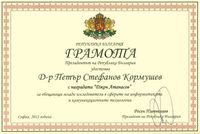I have participated in the following EU projects:

|
WALK-MAN (Whole-body Adaptive Locomotion and Manipulation) FP7-ICT-611832, affiliated with ADVR-IIT 2013-2016 |

|
PANDORA (Persistent Autonomy through learNing, aDaptation, Observation and Re-plAnning) FP7-ICT-288273, STREP, affiliated with ADVR-IIT 2012-2014 |

|
STIFF-FLOP (STIFFness controllable Flexible and Learn-able Manipulator for surgical OPerations) FP7-ICT-287728, IP, affiliated with ADVR-IIT 2012-2015 |

|
AMARSI (Adaptive Modular Architectures for Rich Motor Skills) FP7-ICT-248311, IP, affiliated with ADVR-IIT 2010-2014 |

|
INFRAWEBS (Intelligent Framework for Generating Open Adaptable Development Platforms for Web-Service Enabled Applications Using Semantic Web Technologies) FP6-IST-511723, affiliated with BAS-BG 2004-2006 |
Research projects that I have worked on in the past:
Robot Learning and Interaction
Since October 2009 until now, I have been doing post-doctoral research at the Advanced Robotics dept. of IIT. As a member of the Learning and Interaction group, I am participating in many projects, most of them funded by EU FP7, in the area of robot learning and human-robot interaction.
Robotics and Human-Robot Interaction
From April 2006 to September 2009 (for 3.5 years), I was doing my PhD research in robotics and machine learning in the laboratory of Prof. Kaoru Hirota at the Department of Computational Intelligence and Systems Science, Tokyo Institute of Technology.
In 2006 and 2007, I participated in a NEDO project sponsored by the Japanese government, called “Development Project for a Common Basis of Next-Generation Robots”, with Prof. Hirota as a project leader. The goal of the project was to develop a framework for natural communication between robots and humans by including face expressions and emotions generated in an affinity pleasure-arousal space of mental states. We conducted experiments with different prototypes of an eye-robot for emotion expression and with a speech recognition module. [www.nedo.go.jp/activities/portal/p05027.html]
Computational Intelligence for Robot learning
In addition to Prof. Kaoru Hirota’s supervision, from 2007 until 2009 I have been under the direct supervision of visiting Prof. Kohei Nomoto, from Industrial Design Center, Mitsubishi Electric Corp., Tokyo [www.dis.titech.ac.jp/staff/nomoto.html].
My main PhD research is focused on machine learning approaches for robot intelligence, with preference to reinforcement learning algorithms. Under Prof. Nomoto’s supervision, I proposed a novel approach for speeding up the learning process in computer simulations, utilizing previously unused properties of simulations (like non-linearity of time and possibility of direct jumps between distant states). Based on this approach, I created two reinforcement learning techniques, the so called time manipulation and time hopping techniques, which substantially increase the learning speed (more than 6 times). To further improve these techniques, I proposed another algorithm, called eligibility propagation, which improves the state update process and also shows extremely promising results.
Machine Learning and Query Classification
In the summer of 2008, during my internship at Google Japan, I did research on Machine Learning with the purpose of automated search query classification. I developed an algorithm which uses search context vectors and various similarity measures to do classification of the search queries entered at the Google search engine. The prototype implementation of my algorithm is still used internally by the Search Quality team and the YouTube team in Google Japan.
Semantic Web and Semantic Web Services
From 2004 to 2005, I was doing research on the future model of the current Web, called the Semantic Web. I was under the supervision of Prof. Gennady Agre from the Institute of Information Technologies at the Bulgarian Academy of Sciences [www.iit.bas.bg/staff_en/g_agre2.html]. We were participating in a European Union-sponsored FP6 research framework and did research on a key element of the Semantic Web technology: the so called Semantic Web Services. As a result of our research, we created a visual ontology-driven tool for construction of complex WSML logical expressions, to be used as capabilities of semantic web services. The name of the project is INFRAWEBS and our tool is included in the official Semantic Web framework. [http://cordis.europa.eu/projects/rcn/71862_en.html]
Bio-Medical Informatics and Data Mining
From 2005 to 2006, I did research on Medical Data Mining under the supervision of Prof. Antony Popov at the Faculty of Mathematics and Informatics, Sofia University. I created a software application for visualization of multi-dimensional medical data in a convenient way for medical doctors to analyze. My research was focused on dimensionality reduction algorithms, such as the FastMap algorithm.


